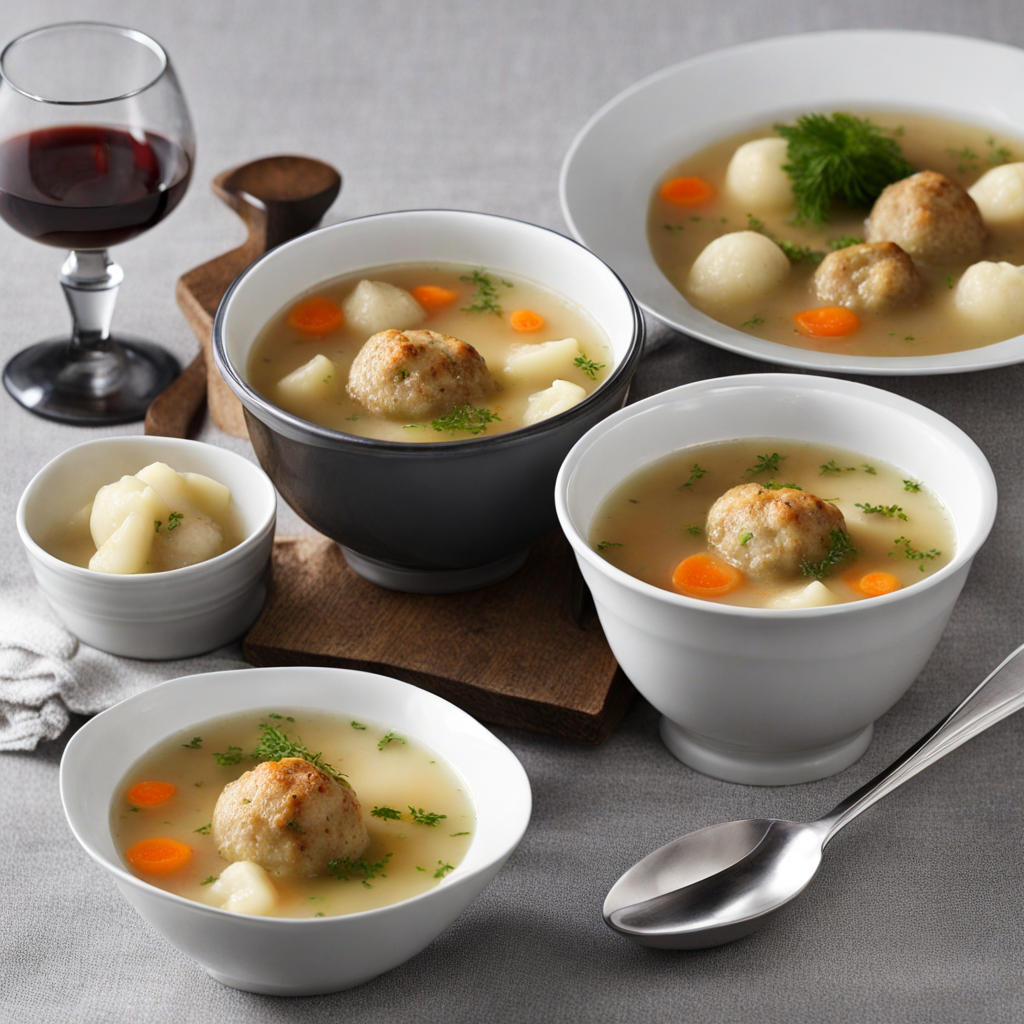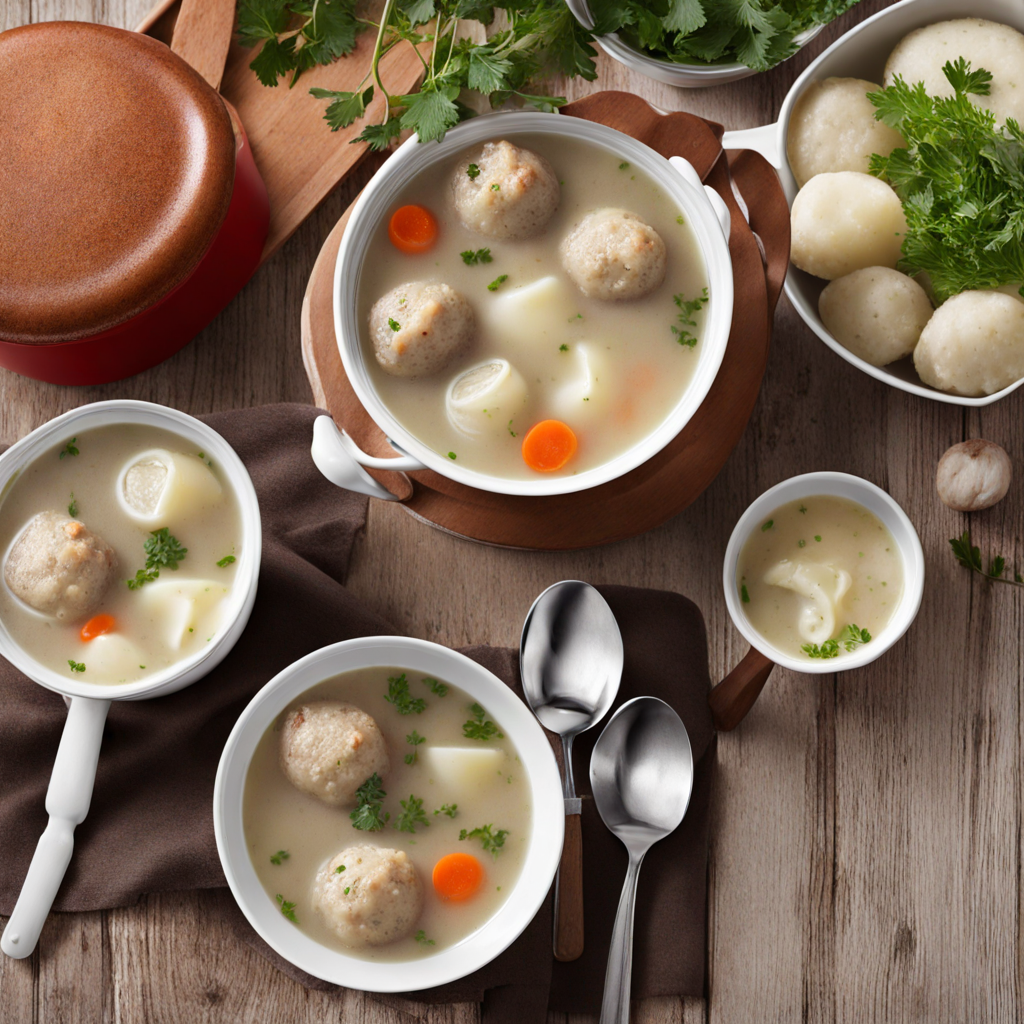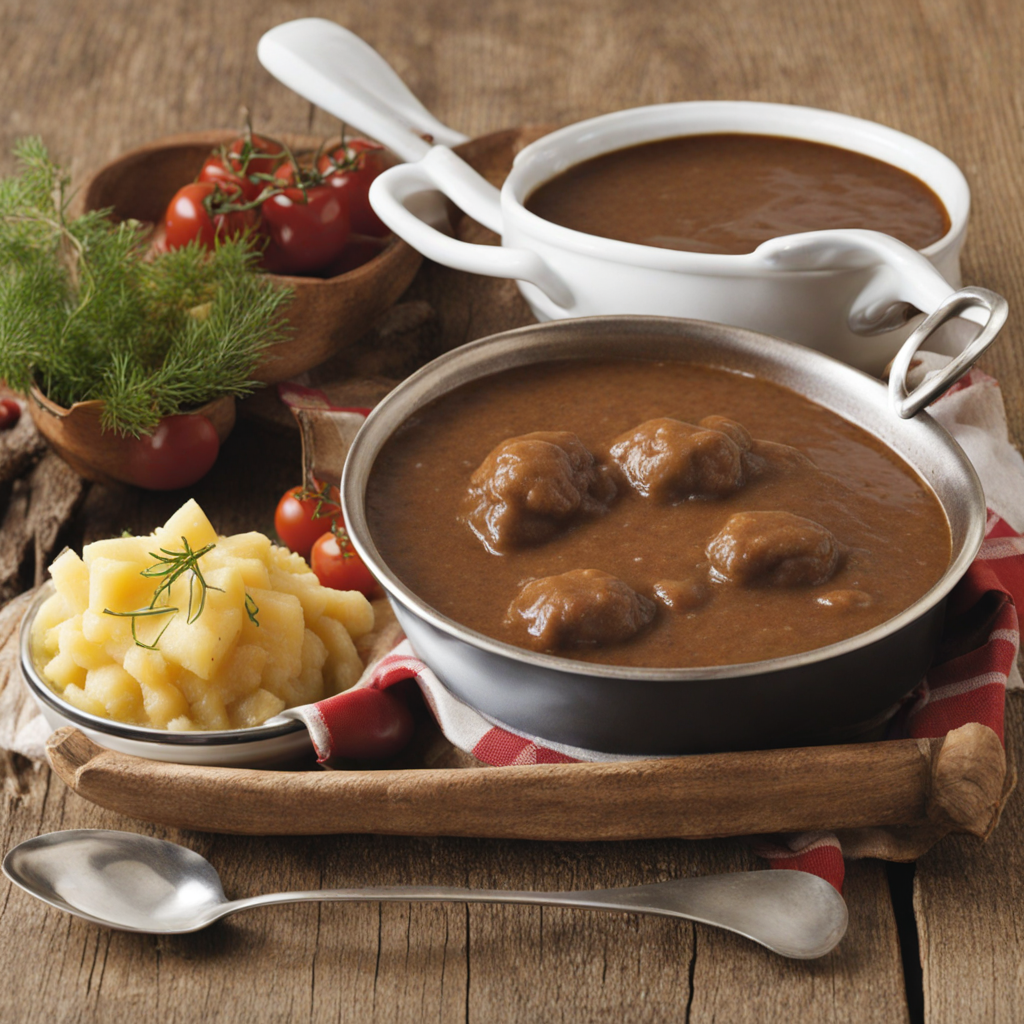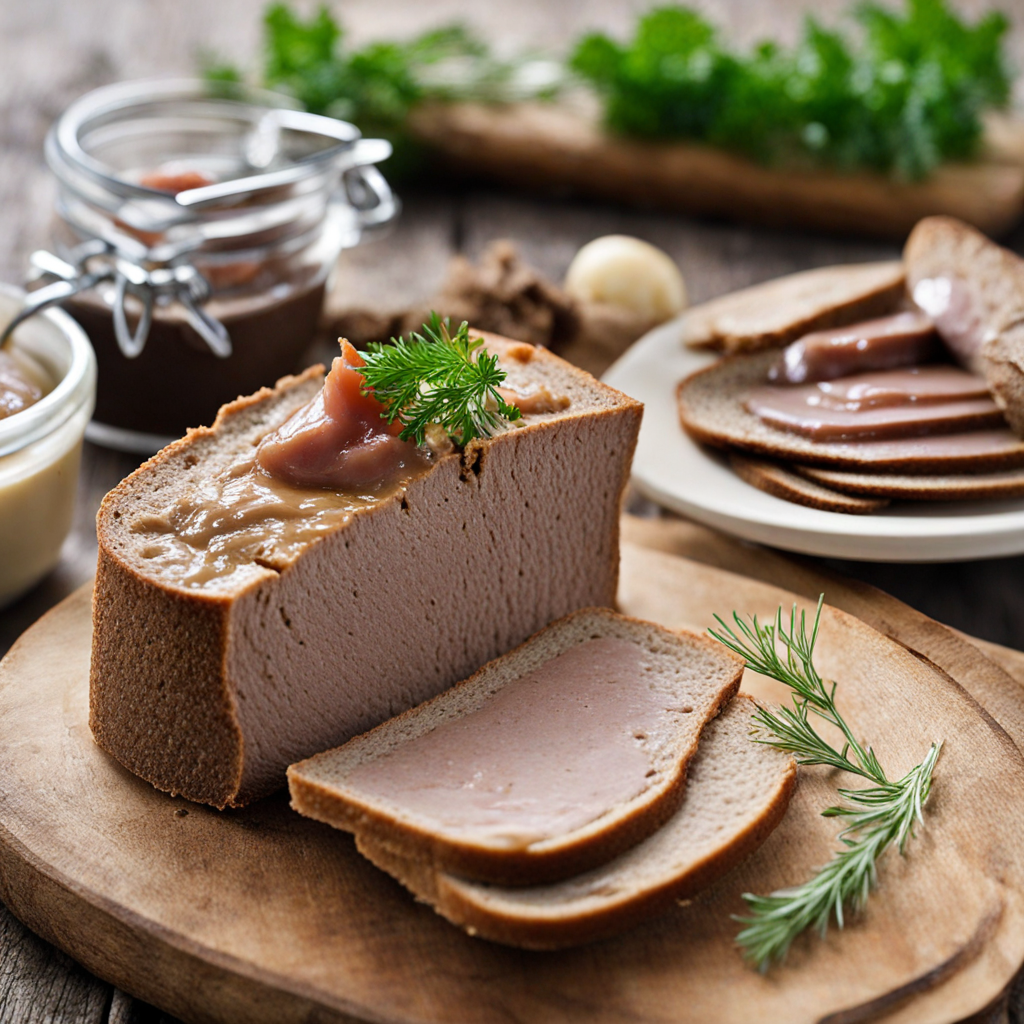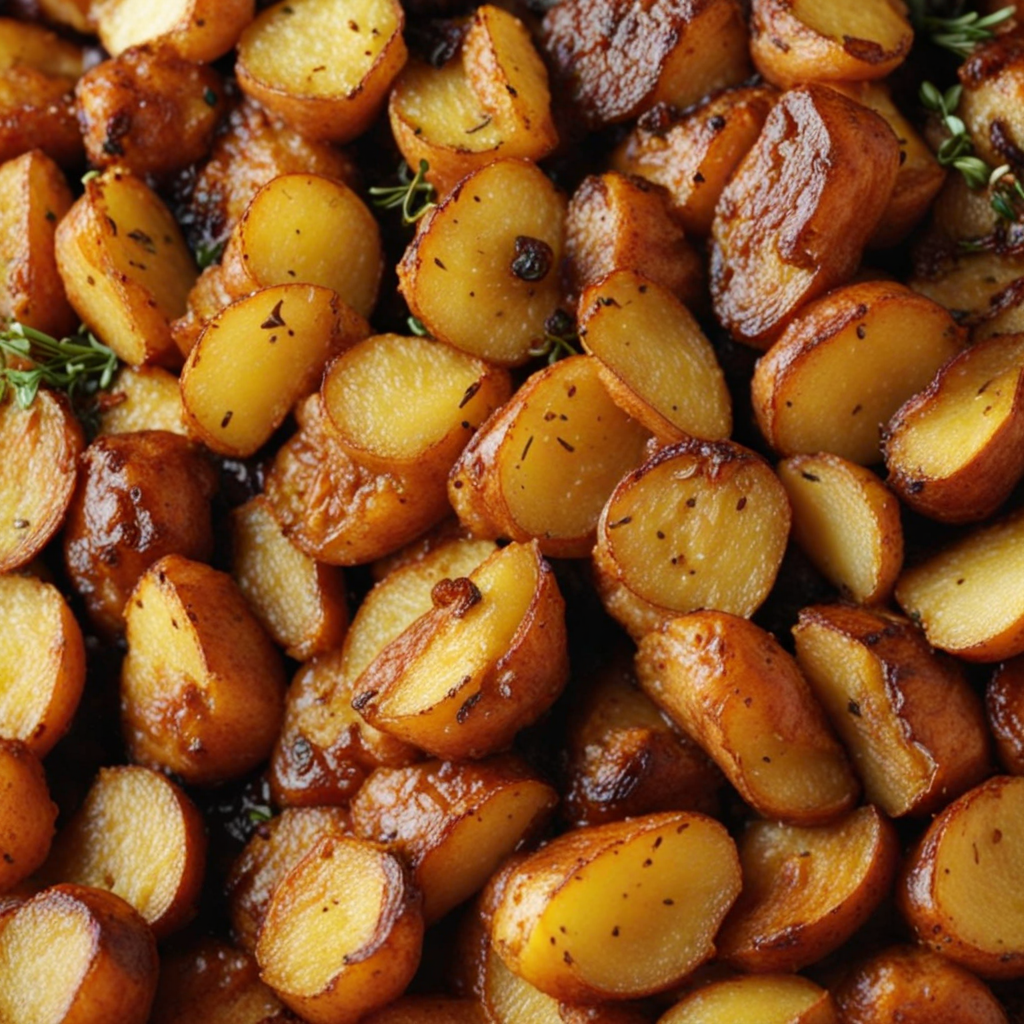Hønsekødssuppe
Hønsekødssuppe, or Danish chicken soup, is a comforting and hearty dish that embodies the essence of traditional Danish home cooking. At its core, it features tender pieces of chicken, typically simmered gently to create a rich and aromatic broth. The use of fresh ingredients, including carrots, leeks, and parsley, adds a vibrant color and depth of flavor to the soup, making it a nourishing choice for any meal. The broth is often seasoned simply with salt and pepper, allowing the natural flavors of the chicken and vegetables to shine through, providing a warm embrace on a chilly day. One of the distinguishing characteristics of Hønsekødssuppe is its versatility. While the base of chicken and vegetables remains consistent, variations can include the addition of noodles or dumplings, which make the dish even heartier. Some families might add a splash of cream or a handful of fresh herbs right before serving, enhancing the soup's richness and inviting aroma. Each bowl is a reflection of personal tastes and family traditions, making it a beloved staple in Danish households. Enjoying Hønsekødssuppe is not just about savoring a delicious meal; it’s also about the experience of gathering around the table with loved ones. This soup is often served with crusty bread on the side, perfect for dipping and soaking up the flavorful broth. Whether served as a starter or the main course, Hønsekødssuppe is a dish that warms the heart and soul, offering a taste of Denmark’s culinary heritage that is both simple and profoundly satisfying.
How It Became This Dish
Hønsekødssuppe: A Culinary Journey Through Danish Heritage Origins and Early History Hønsekødssuppe, or Danish chicken soup, is a cherished dish that embodies the essence of Danish comfort food. Its roots can be traced back to the rural landscapes of Denmark, where chicken farming was a common practice. Historically, the chicken was considered a valuable source of protein, especially in a country with a predominantly agrarian society. The simplicity of the ingredients reflects the resourcefulness of Danish cooks who made the most of what they had available. The earliest records of soup-making can be found in ancient civilizations, but in Denmark, the tradition of boiling poultry dates back to the Viking Age. The Vikings, known for their seafaring and raiding, also brought with them a robust culinary tradition that favored hearty, warming dishes perfect for the cold northern climate. The practice of simmering meat in water to create a nourishing broth likely emerged during this time and has evolved into various regional specialties, including Hønsekødssuppe. Cultural Significance Hønsekødssuppe is more than just a dish; it represents the heart of Danish family meals and gatherings. Traditionally, it has been served on special occasions, family celebrations, and even during times of illness, as it is believed to have restorative properties. The soup is often prepared in large quantities, allowing families to share it with neighbors or friends, reinforcing the communal spirit that is central to Danish culture. During the 19th century, as Denmark underwent significant societal changes, including urbanization and industrialization, Hønsekødssuppe adapted to the shifting landscape. It became a staple in households across the country, symbolizing comfort and home. The soup was often served with a side of rye bread, another staple of Danish cuisine, providing a filling and satisfying meal that could be enjoyed by all members of the family. Ingredients and Preparation At its core, Hønsekødssuppe is made from chicken, typically a whole bird, which is simmered to create a rich, flavorful broth. The addition of root vegetables such as carrots, parsnips, and celery enhances the sweetness and depth of the soup. Fresh herbs, particularly dill and parsley, are often used to brighten the flavors, while salt and pepper provide the essential seasoning. The preparation of Hønsekødssuppe is a labor of love. The chicken is first boiled until tender, and then removed from the pot to cool. The broth is strained and clarified before the vegetables are added, allowing them to cook until soft. Once ready, the chicken is shredded and returned to the pot, creating a warm, inviting dish that is often served with homemade egg noodles or dumplings. Evolution Over Time As Denmark entered the 20th century, the culinary landscape began to change with the introduction of new cooking techniques and ingredients. The advent of refrigeration, for example, allowed for greater flexibility in ingredient sourcing. While traditional recipes for Hønsekødssuppe remained popular, variations began to emerge, reflecting the changing tastes of Danish society. In urban centers, where lifestyles became increasingly fast-paced, pre-packaged soups and convenience foods began to gain popularity. While some families opted for quicker alternatives, many still cherished the homemade version of Hønsekødssuppe, passing down recipes through generations. The emphasis on locally sourced, seasonal ingredients also gained traction, aligning with the Danish concept of "hygge," which emphasizes coziness and togetherness. In recent years, the global movement toward sustainability and health-conscious eating has breathed new life into traditional dishes like Hønsekødssuppe. Many cooks have returned to the roots of the dish, focusing on organic, free-range chickens and seasonal vegetables, thus preserving the cultural significance of Hønsekødssuppe while adapting it to modern sensibilities. Hønsekødssuppe in Contemporary Denmark Today, Hønsekødssuppe remains an integral part of Danish cuisine and is enjoyed across the country. It is commonly found in homes, restaurants, and cafes, particularly during the colder months. The dish has also gained international recognition, with Danish restaurants highlighting it on their menus as a symbol of traditional Danish fare. In Denmark, Hønsekødssuppe is often associated with family gatherings and holidays. For example, it is a popular choice at Christmas, where it is served alongside other festive dishes. In this context, the soup becomes a vehicle for storytelling, connecting generations through shared meals and memories. Moreover, the dish reflects broader trends in Danish society, such as the emphasis on sustainability and healthy eating. Many Danish cooks are now experimenting with innovative twists on the classic recipe, incorporating international flavors and techniques while remaining true to the spirit of Hønsekødssuppe. This adaptability speaks to the dish’s enduring appeal and its capacity to evolve with the times. Conclusion Hønsekødssuppe is more than just a bowl of chicken soup; it is a testament to Denmark's rich culinary heritage, reflecting the values of community, comfort, and tradition. As it has evolved over the centuries, the dish has maintained its cultural significance, serving as a bridge between the past and the present. In a world that often feels fast-paced and disconnected, Hønsekødssuppe invites us to slow down, gather around the table, and share in the warmth of a homemade meal. Whether enjoyed on a chilly winter’s day or as part of a festive celebration, the soup continues to nourish both body and soul, embodying the very essence of Danish hospitality.
You may like
Discover local flavors from Denmark


